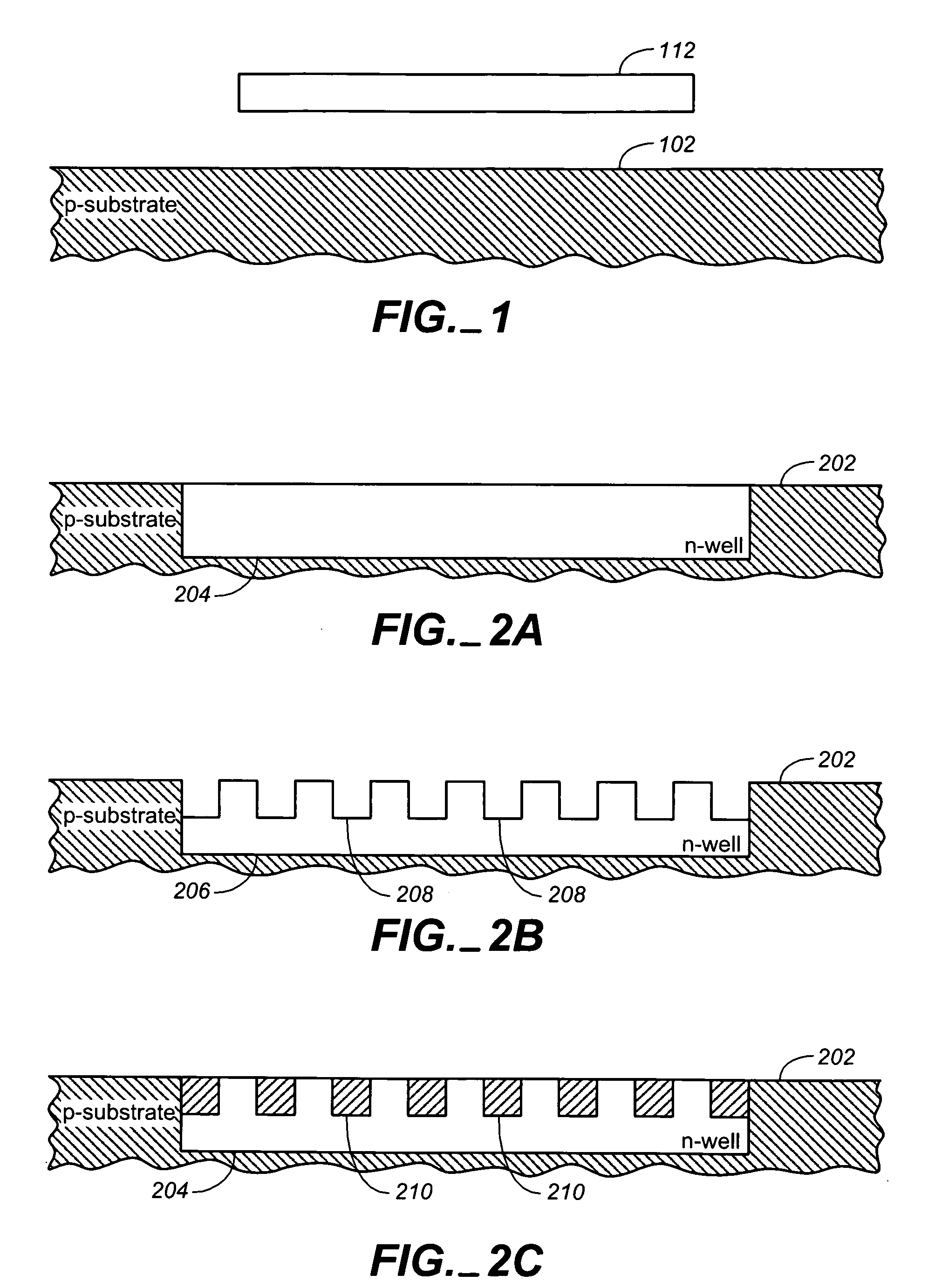Technique and methodology to passivate inductively coupled surface currents
a surface current and inductive coupling technology, applied in the field of integrated circuit inductors, can solve the problems of lessening the quality factor (q) of a device, reducing and affecting the quality of the device, so as to reduce the noise of the substrate and lessen the parasitic capacitance
- Summary
- Abstract
- Description
- Claims
- Application Information
AI Technical Summary
Benefits of technology
Problems solved by technology
Method used
Image
Examples
Embodiment Construction
[0012] With reference now to the figures, FIG. 1 illustrates an IC inductor in accordance with an exemplary embodiment of the present invention. Inductor coil 112 is formed over p-substrate 102. Substrate 102 may have formed therein or thereon other components not shown. Substrate 102 is a lightly p-doped semiconductor. IC inductor 112 may cause inductively coupled surface currents on substrate 102. Such currents lessen the quality factor (Q) for a device and can cause latch-up and other failures on a chip.
[0013]FIGS. 2A-2D depict the fabrication of a semiconductor device with an inductor coil in accordance with an exemplary embodiment of the present invention. More particularly, with reference to FIG. 2A, a deep n-well 204 is implanted into substrate 202. N-well 204 may be implanted through a window in a photoresist mask, for example. The n-well may be formed by a high-energy implant, typically phosphorus as the dopant. The implant dosage is typically on the order of 1×1016 atoms / ...
PUM
 Login to View More
Login to View More Abstract
Description
Claims
Application Information
 Login to View More
Login to View More - R&D
- Intellectual Property
- Life Sciences
- Materials
- Tech Scout
- Unparalleled Data Quality
- Higher Quality Content
- 60% Fewer Hallucinations
Browse by: Latest US Patents, China's latest patents, Technical Efficacy Thesaurus, Application Domain, Technology Topic, Popular Technical Reports.
© 2025 PatSnap. All rights reserved.Legal|Privacy policy|Modern Slavery Act Transparency Statement|Sitemap|About US| Contact US: help@patsnap.com



